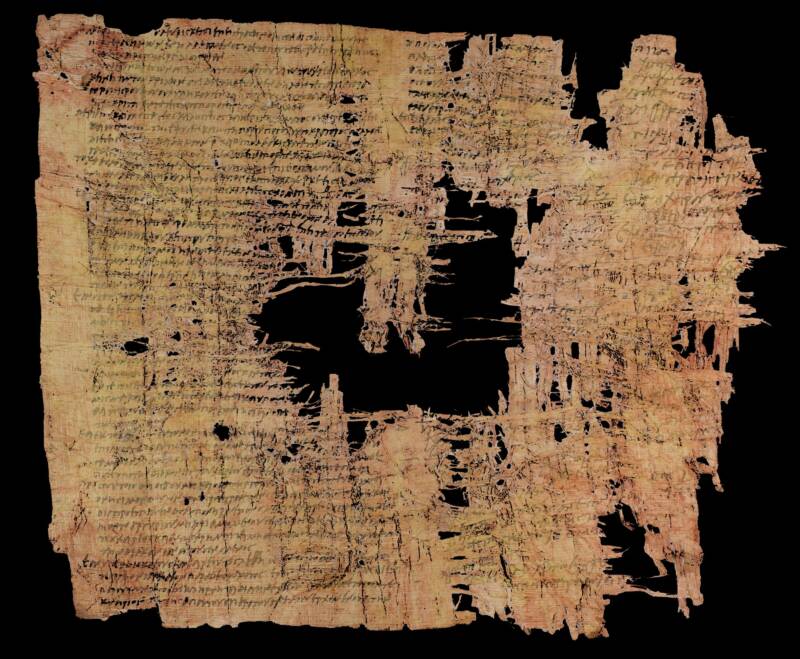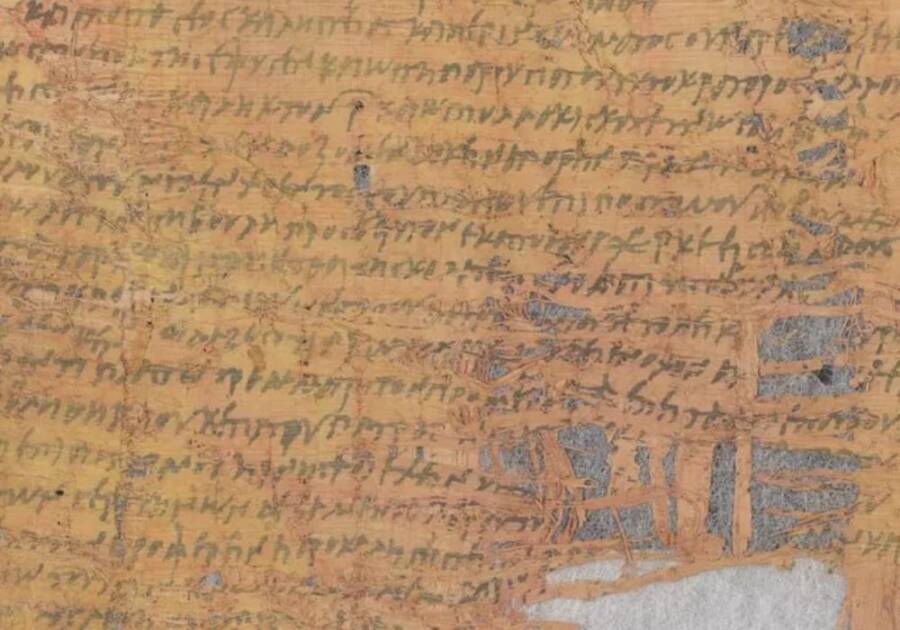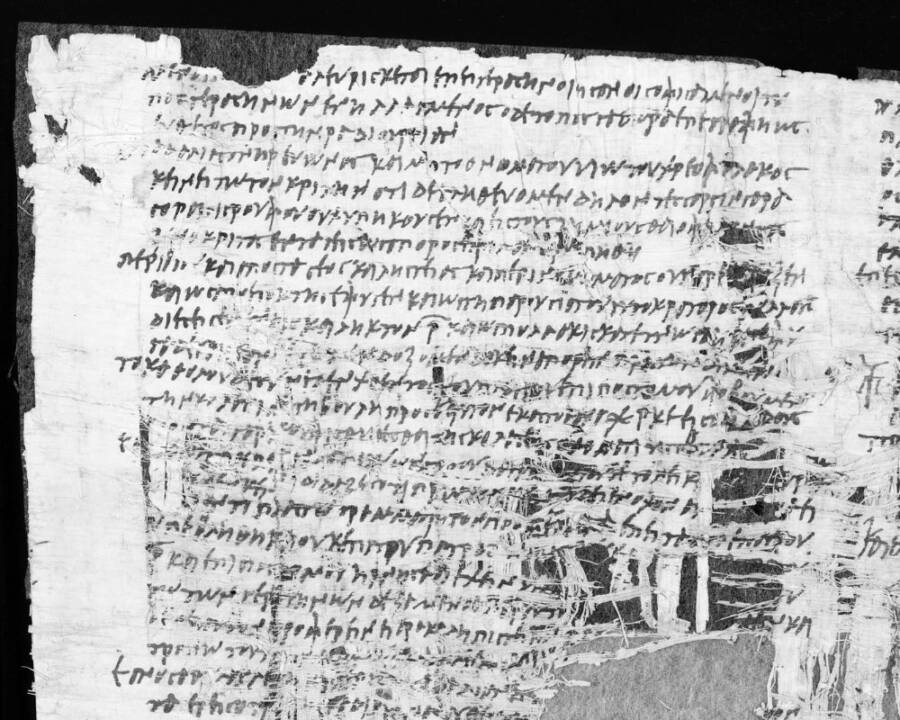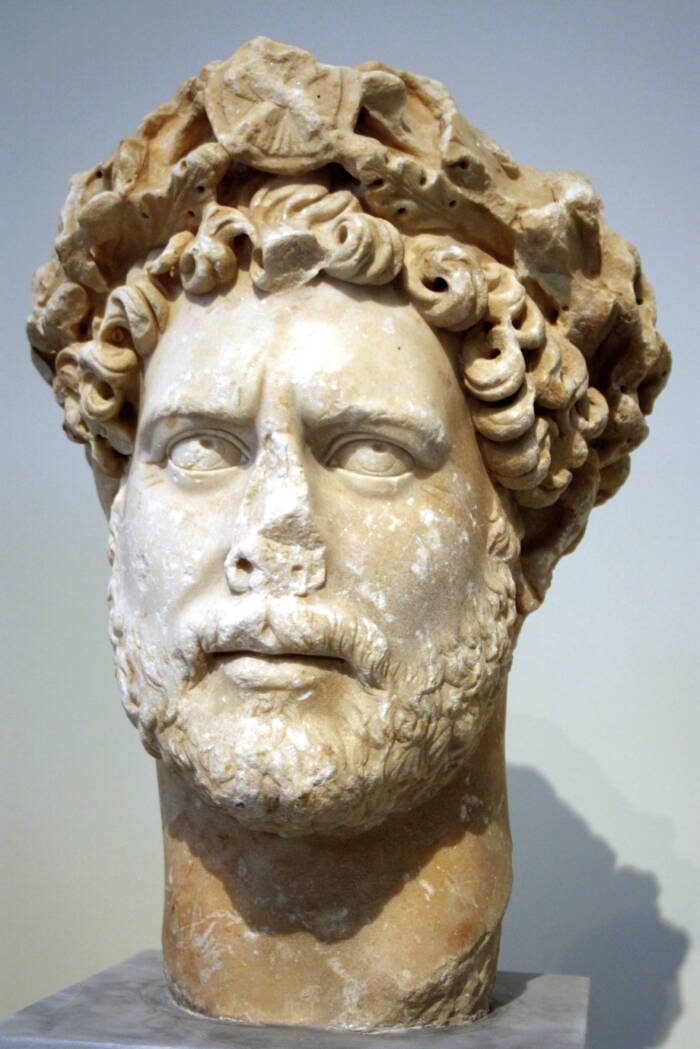The 133-line scroll — the longest Greek papyrus ever found in the Judean Desert — was recently translated and contains prosecutors' notes about a criminal trial before Roman officials.

Shai Halevi, Courtesy of the Leon Levy Dead Sea Scrolls Digital Library, Israel Antiquities AuthorityAt 133 lines, the scroll is the longest Greek papyrus ever found in the Judean Desert, though several large chunks are missing.
While looking through the archives at the Israel Antiquities Authority, an ancient scroll caught the eye of Professor Hannah Cotton Paltiel of Hebrew University. The scroll had been classified as Nabataean, an ancient Arabic dialect, but as Cotton Paltiel studied it, she realized that it was actually written in Greek — and the race began to decipher what the 1,900-year-old papyrus said.
After studying the scroll, a team of academics was able to determine that the 133-line document contained notes about a criminal trial that took place around 131 C.E. The scroll is not only the longest Greek papyrus found in the Judean desert, but it also contains details about the best-documented trial from Roman times — aside from that of Jesus Christ.
Rediscovering The Mislabeled Greek Papyrus
According to a statement from Hebrew University, Cotton Paltiel was organizing scrolls in Israel Antiquities Authority’s Scroll Laboratory in 2014 when one of the ancient documents stood out to her. It was labeled as Nabataean — a nomadic Arab tribe from the fourth century B.C.E. to the first century C.E. — but Cotton Paltiel could see that the label was incorrect.
“I volunteered to ‘organize’ the papyri found in the Israel Antiquities Authority’s Scroll Laboratory, and when I saw it marked as written in ‘Nabataean,’ I burst out exclaiming, ‘It’s Greek to me!'” she recalled.
The document was written in Greek because Greek became the administrative language of the region when it was conquered by Alexander the Great in the fourth century B.C.E. When the Romans came in the first century B.C.E., they preserved it. But translating it was no easy task.
“It is a long and difficult papyrus and more interesting than any of the others I have published or read,” Cotton Paltiel told All That’s Interesting in an email. “It is not strictly a legal contract, with the repetitive formulae you find in all of them; nor is it part of an archive, like the Babatha Papyri or those of Salome Komaise. [O]ne had to read it without having any ready clues!”

Shai Halevi, Courtesy of the Leon Levy Dead Sea Scrolls Digital Library, Israel Antiquities AuthorityA close-up view of the papyrus, which was written in the administrative language of the time: Greek.
Working with an international team from the Austrian Academy of Sciences, the University of Vienna, and Hebrew University, she and the others determined that the document contained prosecutors’ notes for a trial that took place before Roman officials in the second century C.E.
The trial had two Jewish defendants, Gadalias and Saulos, and it occurred during a crucial point between two Jewish rebellions, the Jewish Diaspora revolt (115 to 117 C.E.) and the Bar Kokhba revolt (132 to 136 C.E.).
A Fascinating Tale Of Tax Evasion, Fraud, And Rebellion
As detailed in a study published in the journal Tyche, the papyrus was written on the eve of Gadalias and Saulos’ trial before Roman officials. Written by the Roman prosecutors, the 133-line document is full of details about evidence and strategy.

Shai Halevi, Courtesy of the Leon Levy Dead Sea Scrolls Digital Library, Israel Antiquities AuthorityAn infrared image of the papyrus.
So, who were Gadalias and Saulos? The two Jewish defendants were accused of multiple crimes, including forging documents and defrauding the Roman tax authority by selling slaves under the table (or possibly simply setting them free). Gadalias, the son of a notary with a long criminal history of his own, apparently helped Saulos execute the crime.
The two men were also accused of rebellious activities at a time when rebellions were increasingly putting the region on edge. Their trial likely took place sometime between 129 and 131 C.E., after the Jewish Diaspora revolt and just before the Bar Kokhba revolt.
As the researchers found, the papyrus implies that Gadalias and Saulos were involved in rebellious activities during Emperor Hadrian’s visit to the region.

Giovanni Dall’Orto/Wikimedia CommonsResearchers were able to date the papyrus because it mentions the Roman emperor Hadrian, who visited the region between 129 and 130 C.E.
“Whether they were indeed involved in rebellion remains an open question, but the insinuation speaks to the charged atmosphere of the time,” Dr. Anna Dolganov of the Austrian Academy of Sciences, one of the study authors, said in a Facebook post by the Israel Antiquities Authority.
Whether or not Gadalias and Saulos were involved in the rebellion, it’s possible that the Bar Kokhba revolt interrupted their trial. Indeed, researchers suspect that the papyrus was preserved because it was taken to a hideout cave by a refugee during the rebellion — possibly by one of the prosecutors’ scribes — where it was preserved after its owner perished.
“Like almost all the other papyri from Israel, it was preserved in antiquity in the caves of the Judean Desert,” Cotton Paltiel told All That’s Interesting. “The dry climate saved them all!”
From there, it seemingly fell into the hands of a Bedouin trader — and then made its way to the Israel Antiquities Authority archives. Next, Cotton Paltiel plans to translate it into Hebrew alongside a “reader-friendly commentary” so that it can be studied by a wider audience.
“This papyrus is extraordinary because it provides direct insight into trial preparations in this part of the Roman Empire,” Dolganov remarked. Study author Avner Ecker of Hebrew University added: “This is the best-documented Roman court case from Iudaea apart from the trial of Jesus.”
After reading about the ancient papyrus detailing a criminal trial in Israel, go inside the complicated story of why the Roman Empire collapsed. Or, learn about the elusive location of Golgotha, the place where Jesus Christ was purportedly crucified.





